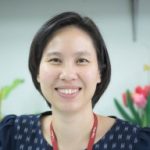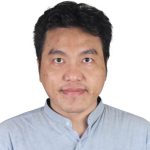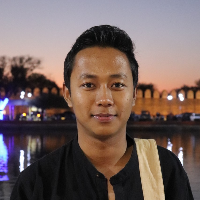- This topic has 26 replies, 14 voices, and was last updated 2 months, 1 week ago by
 Nang Phyoe Thiri.
Nang Phyoe Thiri.
-
AuthorPosts
-
-
2025-09-25 at 9:30 am #50838
 SaranathKeymaster
SaranathKeymasterPlease give an example of a system in your organization (either successful or fail)—this could be the same system you mentioned in the previous topic discussion (Topic 1). Do you think that the organization appropriately managed the change or not? Think about ADKAR model that we just learned.
-
2025-10-01 at 8:51 pm #51049
 Wah Wah LwinParticipant
Wah Wah LwinParticipantI’d like to share another example of a successful system that was used in my previous organization. The system, called Integra, is a real-time project management tool that integrates operations and program activities such as budgeting, supply chain management, human resources, and administration. The main purpose of Integra is to provide transparency to donors and stakeholders through real-time reporting. For example, showing budgets versus deliverables, as well as outcomes.
From my perspective, the system worked well because the organization managed the change process effectively as follows:
• Awareness for change: The senior management team (SMT) began by raising awareness among end users/staff. They introduced the system, explained its purpose, and emphasized the benefits of using it.
• Desire to support change: At first, end users/staff were reluctant to move away from traditional methods, fearing that the system would be complicated, time-consuming, and add to their workload. However, SMT provided proper training through simulation exercises, which increased both awareness and knowledge. They also gathered feedback from users and made system adjustments based on that feedback, which helped reduce resistance.
• Knowledge of how to change: Training was tailored to staff roles and responsibilities. For example, program staff were trained on program-related modules, while finance staff received training on the budget system. At the end of the process, all staff members participated in a collective training session to better understand how the entire system worked.
• Ability to use knowledge for change: At the beginning of system implementation, end users/staff faced unfamiliar and time-consuming using the system. However, SMT and IT staff were always on-board to coach end-users depending on their barriers of using the system. This allowed the end-users to be familiar and comfortable with the system.
• Reinforcement to make the change stick: Organization leaders and SMT continued to monitor the system’s use via regular communication with the staff/users, and collect feedback from staff across departments to ensure the system was being effectively adopted and improved over time.-
2025-10-06 at 10:53 pm #51176
 Kevin ZamParticipant
Kevin ZamParticipantThanks Ma Wah for sharing another system!
-
2025-10-08 at 4:55 pm #51220
 Nang Phyoe ThiriParticipant
Nang Phyoe ThiriParticipantThanks Ama for sharing about Integra and their system change management process.
-
-
2025-10-05 at 2:16 am #51135
 Than Htike AungParticipant
Than Htike AungParticipantI would like to discuss the same project posted in previous topic discussion.
ADKAR ModelAwareness
Stakeholders were clearly informed of the need to move from paper-based systems to an electronic record platform. For every expansion, we also advocate management level and explain to operational level staffs why we need to change.Desire
Program manager, regional officers, clinicians, nurses and data assistants were motivated to adopt the system because it directly solved their operational pain points (duplication, slow reporting, difficult to track down missing patients. Moreover, able to customize to their requirements is also a motivation factor, as they can also involve in the development process by providing their feedback.Knowledge
Training sessions were provided for different levels of users, from data assistants to program managers. Although initial training was basic, ongoing refresher sessions helped users gain confidence and adapt to new workflows.Ability
Users were able to apply their training in real clinical settings since the system was designed to match existing ART workflows. Dedicated IT support team was available to troubleshoot early issues, ensuring continuity of service.Reinforcement
Continuous support, periodic system updates, and monitoring visits helped reinforce usage. Because the system became the official platform for national HIV reporting, users were motivated to consistently use it. -
2025-10-06 at 10:47 pm #51175
 Kevin ZamParticipant
Kevin ZamParticipantUsing the same HMIS (DHIS-2) of Myanmar Public Health;
1. Awareness: Many staff are used to paper-based reporting and lack understanding of DHIS2 benefits. Communication meetings, orientation, and demonstrations were needed to explain why the change wass ncessary emphasizing improved data-driven decision-making.2. Desire: Resistance arose from fear of extra workload or job insecurity. To build motivation, recognize and reward early adopters as “DHIS2 Champions.”
3. Knowledge: Limited digital literacy and inconsistent training hindered adoption. Conducted many practical, step-by-step training in local languages, supported by user manuals and job aids, which was known as “ToT” “Training of Trainers” to cascade the training locally.
4. Ability: Challenges included poor internet, lack of devices, and double work during transition. Providing necessary equipment, on-site coaching to strengthen the application locally.
5. Reinforcement: To sustain change, integrated DHIS2 reports into routine supervision and performance reviews. Providing annual refresher training, ensuring leadership used DHIS2 data in decision-making, and allocating a stable budget for system maintenance from central government.
-
2025-10-07 at 11:19 am #51183
 Wah Wah LwinParticipant
Wah Wah LwinParticipantHi Kevin! Thanks for sharing DHIS2 practices in MM.
-
2025-10-08 at 5:03 pm #51222
 Nang Phyoe ThiriParticipant
Nang Phyoe ThiriParticipantThank for sharing Kevin. I have learnt that series of meetings and orientations may need to make staff aware and motivated about the system change.
-
-
2025-10-07 at 8:21 pm #51195
 Myo ThihaParticipant
Myo ThihaParticipantI have experience implementing Electronic Medical Record (EMR) systems to replace paper-based patient records. This system implementation can be considered a successful initiative that significantly improved data and information management and workflow efficiency. In my opinion, the organization appropriately managed the change in terms of ADKAR:
Awareness: All healthcare professionals are aware of why they have to adapt to this system. The general manager, director, and managing director of the clinic communicated and conducted orientation for all related personnel.
Desire: After receiving the orientation from the Management Team and repeated coaching, all healthcare professionals know the expectations and the value of change from paper-based to EMR. So, they have a desire to change.
Knowledge: IT personnel, MEL staff, and EMR focal conducted training and mentoring sessions and provided necessary technical support to improve and have the additional skills they need to use EMR.
Ability: After providing the training, healthcare professionals used the EMR as a pilot. In this phase, necessary technical assistance and mentoring sessions are also continuously provided.
Reinforcement: After having the ability to use the EMR and knowing a clear shared vision, this system is sustainable to maintain.
In conclusion, the organization appropriately managed the change according to the ADKAR model.
-
2025-10-07 at 8:56 pm #51198
 Jenny BituinParticipant
Jenny BituinParticipantI will use the same system that I shared in the previous topic discussion (eOPT+ tool 2023 version).
Due to the negative feedbacks from end users, the National Nutrition Council (NNC) did the following to avoid system failure when introducing major updates to the system in 2025:Awareness
The need to use the new tool was discussed to the nutrition action officers, with emphasis on the accuracy of the tool in determining the nutritional status of children using age in days instead of age in months.Desire
The new useful features of the tool was discussed. For example, the new tool will be able to generate graphs showing the prevalence of malnutrition in the community. It will also provide them with a more accurate picture of the current nutritional status of preschool age children in the community.Knowledge
Unlike in 2023 wherein the orientation about the tool was done in March, the orientation for the 2025 version was done during the first week of January, before the start of the conduct of the Operation Timbang Plus.Ability
To check if the nutrition officers were able to use the tool correctly, NNC asked the nutrition action officers to try using the tool using data from 2024 as an exercise. Results were then sent via email.Reinforcement
District Nutrition Program Coordinators (DNPCs) were tasked to assist the nutrition action officers in using the new tool. They also offered additional training for those who were not able to attend the orientation, such as the volunteer nutrition workers. -
2025-10-07 at 10:00 pm #51199
Wai Phyo Aung
ParticipantLet me share the changes in way of distribution in flood response to ensure effectives of support to the affected community. I am responsible to report the data timely and make sure the accountability corner to get the feedback directly from the beneficiaries regarding distribution. I am the new role in the team, previously they distributed the items via village leader and get the data collection forms from them. I advocate the team the pro and cons of indirect distributions. It would be difficult to control the quality of data. Village leaders do not understand the procedure of distribution and have limitation to manage effectively. Moreover, there might be fraud case and complaints regarding to the response. I suggest to manage the distribution by the staff. I conducted the data collection form training and develop standard distribution criteria with the input of the management team. At the end, we could distribute the response items with our team effectively. We also keep this practice in the next emergency response. Learning from this scenario, the following are the reflection of change in ADKAR model;
1) Awareness: The team aware the cons of indirect distribution to the community. Data quality, fraud cases, bias, complaints will be impact if we could not supervise the village leaders.
2) Desire: Management Team and Staff agree to improve the quality of work. When they conduct in-person distribution, they well understand the ground condition and take care the importance step to be effective in work.
3) Knowledge: After training, staff gained required skill and technique to manage distribution.
4) Ability: Response team members are voluntarily organized. Staff actively participate in distribution by adjusting with their normal program task. Tools, plan, transportation are also arranged and supported to be effective.
5) Reinforcement: Real time reporting, beneficiaries’ gratitude, staff participation is the key to contribute successfully. Moreover, Management team provide necessary support like stakeholder coordination, technical guidance and appreciation to the response team.
-
2025-10-08 at 1:50 pm #51215
 Jenny BituinParticipant
Jenny BituinParticipantThank you for sharing your strategies during flood response.
-
-
2025-10-07 at 11:47 pm #51204
 Nang Phyoe ThiriParticipant
Nang Phyoe ThiriParticipantI would like to discuss the digital HIS transformation plan in our organization. I think I can use the ADKAR model for the system change.
When I thought about the need for system change, I focused on convincing only the senior management team and our HSS members, not the other staff.
However, I realized that the success of digital HIS system depends on the efforts and active participation of regional and field staff. So, their awareness and desire are also important. Now, we are planning to provide training for HIS staff and health post staff, including hand-on training.
Since the ADKAR should proceed sequentially, I will convince them of why we need to change the system and motivate them.Awareness – I will explain them of the necessity of digital HIS transformation. (to reduce reporting delays due to logistical constraints, to make real-time data-driven decisions and resource allocation like current malaria incidence, to monitor the adherence of clinical guideline and training needs, etc..)
Desire – When they understand the benefits and necessity of the system, we would motivate them by showing how the system will reduce their workload, smoothen the workflow, enhance the visibility and impact of their work and how they will be part of the data-driven decision-making process.
Knowledge – We are planning to give hand-on training of the software usage
Ability – After the training, pilot testing will be done for 3 months, so that they have confidence to fully deploy the system.
Reinforcement – We will support them with continuous coaching and reward mechanisms, gather feedback from the user and modify the system accordingly.
In summary, we overlooked the awareness and desire among staff and the change was not planned according to ADKAR. But now, by considering and inclusion of all ADKAR stages sequentially, our digital HIS transformation has a greater chance of success.
-
2025-10-08 at 1:47 pm #51214
 Jenny BituinParticipant
Jenny BituinParticipantThank you for sharing. I hope your digital HIS transformation will be successful. 🙂
-
2025-10-08 at 4:51 pm #51218
 Nang Phyoe ThiriParticipant
Nang Phyoe ThiriParticipantThank you Jen 🙂 🙂 We hope so too.
-
-
2025-10-11 at 8:16 am #51267
 SaranathKeymaster
SaranathKeymasterDon’t forget that knowledge will be effective, once the awareness and desire have been successfully managed. Cheers. Wish you have a success implementation.
-
2025-10-11 at 2:23 pm #51273
 Nang Phyoe ThiriParticipant
Nang Phyoe ThiriParticipantThank you so much for the encouragement, Ajarn. I will take that in mind and utilized sequence of ADKAR model throughout the implementation process. :):)
-
-
-
2025-10-08 at 12:48 am #51206
 Myo OoParticipant
Myo OoParticipantI would like to share about the change of the same previous project during the implementation of the data validation system, in line with the ADKAR model.
Awareness: Staff were informed about the importance of improving data quality and the need for an automated validation tool.
Desire: Users were motivated to use the system since it supported their work and reduced the burden of manual data checking.
Knowledge: Training sessions were conducted on how to run validation scripts and interpret validation reports.
Ability: After training, staff were able to apply the system independently and correct data based on the validation results.
Reinforcement: Regular monitoring, recognition of improved data quality, and ongoing system support reinforced continuous use.
-
2025-10-08 at 4:59 pm #51221
 Nang Phyoe ThiriParticipant
Nang Phyoe ThiriParticipantThanks Mio for sharing the implementation of data validation system. It is great that staff are already motivated about the system before implementation.
-
-
2025-10-08 at 5:06 pm #51223
Salin Sirinam
ParticipantIn my hospital, the EMR system is still used alongside paper records, and a newer inpatient digital system is currently being piloted. I think the change management has not been fully effective. Referring to the ADKAR model:
– Awareness: I believe that staff are frustrated, and some concerns may have been raised to the hospital board. However, the problems are not fully acknowledged, as staff keep pushing through daily work to prioritize patient care.
– Desire: Even though frontline staff are frustrated with the current system, many are not motivated to learn a completely new one from scratch. They feel the system only adds more work without clear benefits.
– Knowledge: Training was inadequate and delivered randomly. By the time the system launched, many users had already forgotten what they learned.
– Ability: The system itself is not user-friendly, and IT support is limited. Users often had to rely on each other for help instead of receiving timely support.
– Reinforcement: No ongoing reinforcement or encouragement to adopt the system. Without incentives or follow-up, many staff reverted to using paper records.
-
2025-10-08 at 9:34 pm #51231
 Soe Wai YanParticipant
Soe Wai YanParticipantIn my organization, “The One Dashboard” was introduced in my previous discussion.
Awareness: The organization communicated the purpose of the new system early through emails and meetings. Most employees were aware of the change and its benefits.
Desire: This area was weaker. Many employees did not feel involved in the decision-making process and were hesitant to shift from familiar tools. There was limited effort to build motivation or address concerns.
Knowledge: Training was provided but it did not always meet the specific needs of different teams. Some users were unclear on how to apply the dashboard to their roles.
Ability: During implementation, many employees struggled to use the demo system effectively. There was not enough hands-on support or role-specific guidance to help users feel confident.
Reinforcement: While leadership continued to promote the dashboard, there was limited follow-up, recognition or feedback mechanisms to ensure long-term adoption.The One Dashboard idea was a valuable initiative but the organization could have better managed the change by involving employees more and providing ongoing support.
-
2025-10-08 at 10:02 pm #51239
 Hteik Htar TinParticipant
Hteik Htar TinParticipantAs mentioned in Topic 1 discussion, our organization is starting to use web based application for data reporting.
For this initiation,
Awareness: the project team did advocacy meeting with senior management team about the sysytem and its usefulness for the project and organization’s values. After getting approval, the project team did consultation meeting with field team and HIS team about the objective and course of system.
Desire, Knowledge and ability: Our partner organization helps as sponsor to start the project and give training to staff frequently. They support the internet charges, laptop and continously feedbacks on any compliant by the staff. They always update the system to be user friendly. The only barrier to continue the system is ongoing cost and this will be weakness in our ability for change.
Reinforcement: The partner offers they can continue their technical support for using system and currently paln to give data management sequential trainings.-
2025-10-09 at 4:23 pm #51248
 Yin Moe KhaingParticipant
Yin Moe KhaingParticipantThank you for sharing this detailed example. It’s great to see how your organization applied the ADKAR model in managing the transition to a web-based data reporting system. I agree that the ongoing cost can be a significant challenge.
-
-
2025-10-09 at 4:21 pm #51247
 Yin Moe KhaingParticipant
Yin Moe KhaingParticipantMy organization implemented a Case Analysis System to track the therapy progress and goals of children with disabilities. The system aimed to improve documentation, rehabilitation goal-setting, and communication among therapists. However, it was partially unsuccessful due to challenges in user adaptation and system design.
According to the ADKAR model (Awareness, Desire, Knowledge, Ability, and Reinforcement), the organization did not fully manage the change process effectively. While there was Awareness about the importance of digital record-keeping, many staff members lacked strong Desire to change from paper-based methods. Training sessions were limited, which meant insufficient Knowledge and Ability to use the new system confidently. In addition, there was little Reinforcement after implementation—no continuous follow-up or recognition for those who used the system properly.
As a result, some therapists continued using manual reports, and data in the system remained incomplete. To improve future system adoption, the organization should strengthen staff engagement, provide regular hands-on training, and establish ongoing monitoring and feedback mechanisms.
-
2025-10-11 at 8:19 am #51269
 SaranathKeymaster
SaranathKeymasterThanks all for your thought. I hope you can apply this ADKAR model to manage change in your current or future projects.
-
-
AuthorPosts
You must be logged in to reply to this topic. Login here
